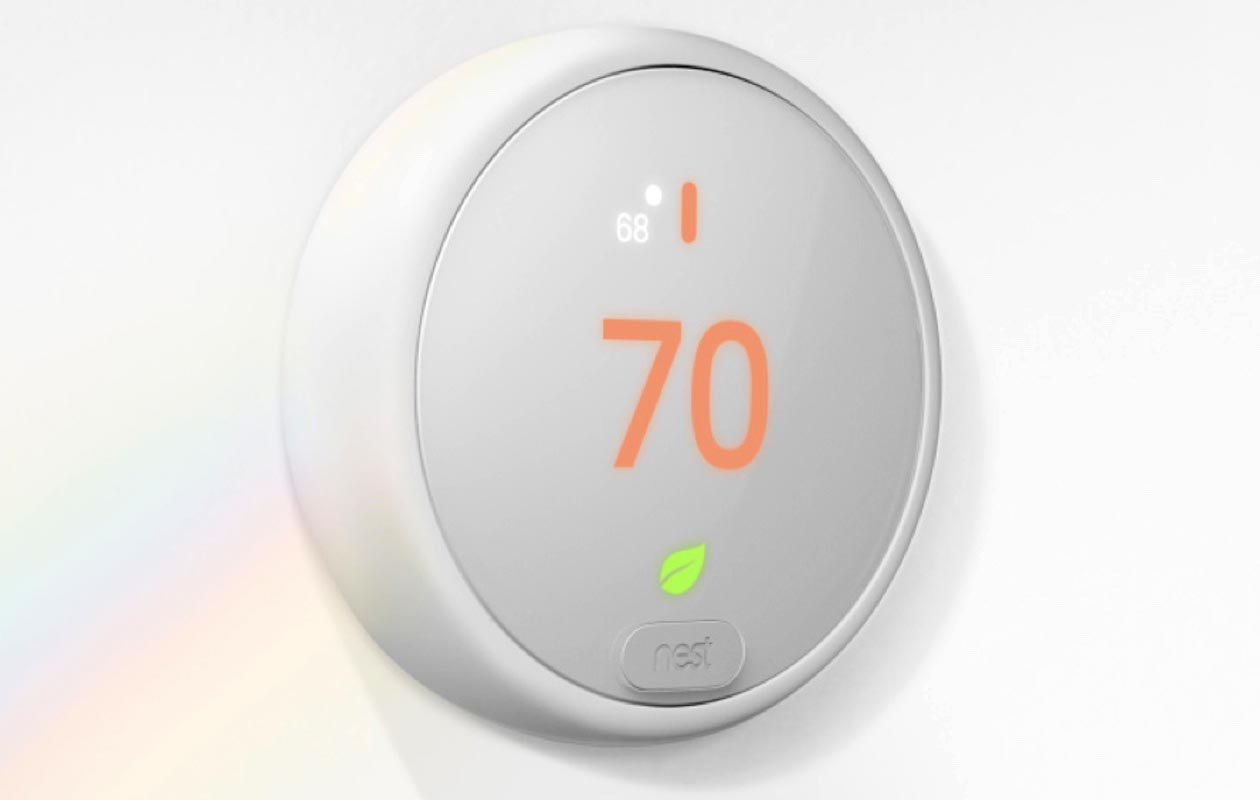Can a NEST Smart Thermostat Save You Money?
A NEST smart thermostat is one of the best smart thermostats, enabling you to control your heating and cooling system by phone or voice and lower your utility bills. On the downside, you can’t automatically set schedules.


A scorching summer is underway, with 2024 ramping up to be the hottest year on record. As you scramble to find ways to temper rising costs, a NEST smart thermostat and other smart thermostats can be a good way to save you money on your electric bills.
Residential customers' electricity bills are estimated to average $173 per month this summer, up from $168 last year, according to the most-recent estimates from the Energy Information Administration.
Data from the Environmental Protection Agency (EPA) supports the fact that smart thermostats meeting Energy Star criteria save users an average of 8% on their utility bills. That can equal about $50 annually, although savings may be greater in locations with frigid winter temperatures or hot summers. But, research also shows that just slightly more than 30 million homes in the U.S. had smart thermostats in 2020.
From just $107.88 $24.99 for Kiplinger Personal Finance
Become a smarter, better informed investor. Subscribe from just $107.88 $24.99, plus get up to 4 Special Issues

Sign up for Kiplinger’s Free Newsletters
Profit and prosper with the best of expert advice on investing, taxes, retirement, personal finance and more - straight to your e-mail.
Profit and prosper with the best of expert advice - straight to your e-mail.
Budget-friendly Google NEST thermostats are WiFi-enabled thermostats that require programming when set up for the first time. For many people, that’s just fine, as they would rather adjust temperatures themselves. That’s not to say that you can’t do some basic automating with the NEST thermostat. Just a few taps on your smartphone and you can easily program everything through the Google Home app.
What are smart thermostats?
The technology behind home thermostats has come a long way. From manual controls to programmable options, smart thermostats can save money, add convenience and keep you comfortable. They offer a variety of features not found in manual thermostats, such as Wi-Fi connectivity, data on energy use and maintenance alerts. Some smart thermostats even provide the ability to learn your family’s heating and cooling needs.
How do smart thermostats work?
Smart thermostats are hardwired into your home’s HVAC system, just like traditional thermostats. However, they also need a Wi-Fi connection to function remotely with an app or your phone. Fortunately, if your Wi-Fi goes out, you can still program your thermostat manually.
Through the app, you can typically schedule when your heating or cooling turns on. You can adjust the temperature in your home no matter where you are, so even when away, you can come home to cozy or cool temps. Smart thermostats work with most heating and cooling setups, even those connected to radiators.
Many smart thermostats have a touch or digital screen that allows you to control temperature. You can’t control your home’s humidity, but you can monitor it and set an alarm if it changes. You can also set your smart thermostat to run during specific times of day through geofencing — the ability to create a virtual fence or imaginary boundary on a map — so that when you leave the house, you can adjust the home’s temperature for maximum efficiency and energy usage.
Can a smart thermostat save you money?
It’s no secret that smart thermostats can cost more than manual thermostats. Most are easily installed by homeowners, while some may require professional installation, adding to your costs. However, upgrading to a smart thermostat can optimize your HVAC systems, reducing energy waste and maximizing savings — about 8% on your heating and cooling costs per year.
A study by NEST found that NEST customers saved an average of 10% to 12% on heating costs and 15% on air conditioning costs, or about $131 to $145 a year. Of course, actual savings can vary from one home to the next and are based on your family’s preferences and energy costs in your area.
On the flipside, the retail price of a smart thermostat is between $120 and $250, not including installation, while a mechanical thermostat may only cost between $15 and $50. At $130, the Google NEST Thermostat is one of the most reasonably priced smart thermostats on the market.
What are the upsides of smart thermostats?
While smart thermostats are efficient and offer cost-savings, there are a few downsides to consider also, such as possible security issues and upfront costs. Here are the upsides:
Energy efficient — Smart thermostats offer control over your heating and cooling systems. You can schedule and track energy use and offer the ability to control your home temperature from your smartphone or other smart device to create customized heating and cooling schedules. That way, your system only runs when needed, which equals energy savings.
Convenience — Smart thermostats can be controlled by a smart device, which is probably one of their best features. Many smart thermostats also learn your routines, alert you when the system needs maintenance, and track outdoor weather.
Cost-efficient — Smart thermostats can save customers an average of 8% on HVAC costs, while some manufacturers boast even higher savings. The cost savings will vary depending on location, climate and comfort levels.
What are the downsides of smart thermostats?
On the downside, smart thermostats have higher installation costs and certain security vulnerabilities. Here are the downsides:
Upfront cost — Smart thermostats are generally more expensive to install than manual and mechanical thermostats, and those with specialized capabilities can cost significantly more. If you’re not a DIYer, add installation by a professional to your upfront costs.
Security vulnerabilities — Smart thermostats can present a gateway for hackers and malicious intruders to access your internet network. Regular software updates can limit access, but the threat still exists.
Tech-savvy barriers — Although smart thermostats are generally easy to install, homeowners must be reasonably tech-savvy to get the most out of them. If you’re not particularly tech-savvy and web apps aren’t your strong suit, the headaches these devices can cause may outweigh the benefits. Also, you may have to overcome a learning curve if you don't understand HVAC systems.
Notable features of the NEST thermostat
- Programming via an app. You can program everything on your smartphone in the Google Home app.
- Presence sensing. The NEST Thermostat uses a built-in motion sensor, touch controls, and your smartphone’s location data via a schedule you program to know when you leave your home.
- Voice control. The NEST thermostat also works with Amazon Alexa and the Google Assistant for voice control.
- Ease of operation. The Google Nest Thermostat is also very easy to manually operate and control.
- Low price tag. The NEST thermostat offers convenience without a high price tag.
Related Content
Profit and prosper with the best of Kiplinger's advice on investing, taxes, retirement, personal finance and much more. Delivered daily. Enter your email in the box and click Sign Me Up.

For the past 18+ years, Kathryn has highlighted the humanity in personal finance by shaping stories that identify the opportunities and obstacles in managing a person's finances. All the same, she’ll jump on other equally important topics if needed. Kathryn graduated with a degree in Journalism and lives in Duluth, Minnesota. She joined Kiplinger in 2023 as a contributor.
-
 What to expect from the global economy in 2026
What to expect from the global economy in 2026The Kiplinger Letter Economic growth across the globe will be highly uneven, with some major economies accelerating while others hit the brakes.
-
 What You Need to Do With Your 401(k) Before 2025 Is Over
What You Need to Do With Your 401(k) Before 2025 Is OverBefore 2025 ends, check your 401(k) contributions, investments, and catch-up eligibility to lock in this year’s tax savings and employer match.
-
 3 Year-End Tax Moves You Can't Afford to Miss
3 Year-End Tax Moves You Can't Afford to MissDon't miss out on this prime time to maximize contributions to your retirement accounts, do Roth conversions and capture investment gains.
-
 The Top 22 Gifts for Grandkids from Walmart in 2025
The Top 22 Gifts for Grandkids from Walmart in 2025From PlayStation to Labubu, you'll find the hottest gifts of 2025 for your grandkids at Walmart this year. Some of them are up to 78% off.
-
 CD vs. Money Market: Where to Put Your Year-End Bonus Now
CD vs. Money Market: Where to Put Your Year-End Bonus NowFalling interest rates have savers wondering where to park cash. Here's how much $10,000 earns in today's best CDs versus leading money market accounts.
-
 Meet the World's Unluckiest — Not to Mention Entitled — Porch Pirate
Meet the World's Unluckiest — Not to Mention Entitled — Porch PirateThis teen swiped a booby-trapped package that showered him with glitter, and then he hurt his wrist while fleeing. This is why no lawyer will represent him.
-
 Smart Business: How Community Engagement Can Help Fuel Growth
Smart Business: How Community Engagement Can Help Fuel GrowthAs a financial professional, you can strengthen your brand while making a difference in your community. See how these pros turned community spirit into growth.
-
 Smart Money Moves Savers Should Make in 2026
Smart Money Moves Savers Should Make in 2026These steps will get you on the road to achieving your 2026 savings goals.
-
 How Much Would a $50,000 HELOC Cost Per Month?
How Much Would a $50,000 HELOC Cost Per Month?Thinking about tapping your home’s equity? Here’s what a $50,000 HELOC might cost you each month based on current rates.
-
 My First $1 Million: Self-Employed Trader, 50, San Francisco
My First $1 Million: Self-Employed Trader, 50, San FranciscoEver wonder how someone who's made a million dollars or more did it? Kiplinger's My First $1 Million series uncovers the answers.
-
 Waiting for Retirement to Give to Charity? Here Are 3 Reasons to Do It Now, From a Financial Planner
Waiting for Retirement to Give to Charity? Here Are 3 Reasons to Do It Now, From a Financial PlannerYou could wait until retirement, but making charitable giving part of your financial plan now could be far more beneficial for you and the causes you support.